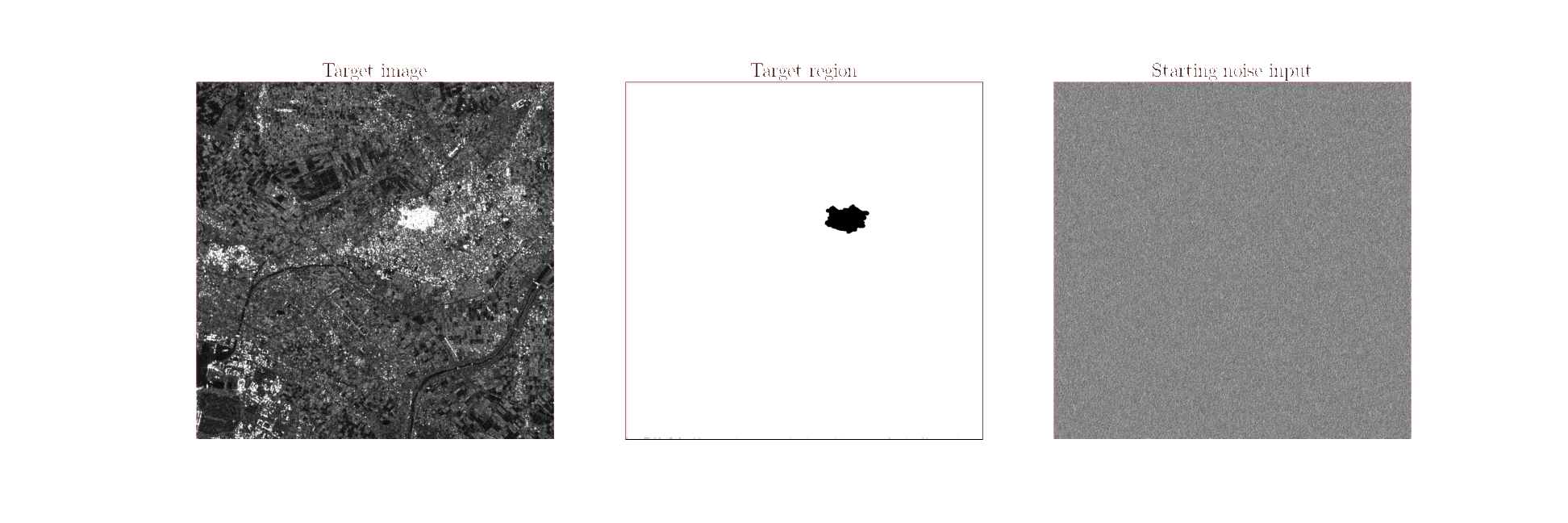Deep Image Prior Amplitude SAR Image Anonymization
¹ Edoardo Daniele Cannas, ¹ Sara Mandelli, ¹ Paolo Bestagini
¹ Stefano Tubaro, ² Edward J. Delp
¹ Image and Sound Processing Laboratory, ² Video and Image Processing Laboratory
This is the official code repository for the paper Deep Image Prior Amplitude SAR Image Anonymization, published on MDPI Remote Sensing.
The repository is currently under development, so feel free to open an issue if you encounter any problems.


Getting started
Prerequisites
In order to run our code, you need to:
- install conda
- create the
sar-dip-anonymizationenvironment using the environment.yml file
conda env create -f envinroment.yml
conda activate sar-dip-anonymization- download and unzip the Sen12MS dataset.
Proof of concept
You can use the notebook proof-of-concept.ipnyb to have a quick glance on the functioning of the proposed method.
The notebook will inpaint a Sentinel-1 GRD SAR image (VV polarization, provided in dip_sar_inpainting/data/) and create the GIF you see above.
Anonymizing SEN12MS samples
The scripts SEN12MS_inpainting_tensorboard.py and SEN12MS_inpainting_wandb.py
allow to perform the anonymization/inpainting procedure on Sen12MS samples. The two scripts differ only for the backend used for logging (tensorboard or wandb, the last providing some nice features like hyperparameter search [see below]).
Both scripts accepts different arguments (you can check all of them with python SEN12MS_inpainting_tensorbooard.py --help).
Basically, the scripts take --samples_per_class tiles of the land-cover classes specified with --inp_classes, make sure that each sample possesses at least --perc_area_cov percentage of its surface covered by a single land-cover class, and inpaint them with the DIP.
The only required parameters are:
--output_dir, path where storing the results of the experiments;--SEN12MS_root, path to the directory containing the unzipped Sen12MS dataset.
We also provide in data:
- the
data/tiles_info.csvPandas DataFrame, containing information on all the tiles of the dataset; - the
data/histogram_norm_DFC_2020_scheme.csvPandas DataFrame, containing information on the land-cover content of the considered tiles.
If you want to double check how we compute these information, be sure to run the Sen12MS_preprocessing.ipynb notebook.
Hyperparameter search
We used WandB Sweeps to perform a grid search over the DIP hyperparameters.
In the ./dip_sar_inpainting/wandb_sweep_search folder we provide .yml files for all the configurations used on the different land-cover classes.
We launched a separate sweep for each class, in order to maximize parallel computation on GPUs (see here).
Generating the anonymized SAR images dataset
To generate the dataset analyzed in the paper, you can simply run the ./dip_sar_inpainting/create_anonymized_dataset.sh bash script.
The script will perform a separate inpainting process for each land-cover class, and save them in the OUTPUT_DIR folder.
You can then use them with the quality analysis notebook (see below) to perform the experiments of the paper.
Land-cover classification
In the ./landcover_classification folder we reported a modified training script to train the models used for the semantic evaluation of the DIP anonymized samples.
It is a modified version of the original SEN12MS Toolbox script to follow the train/val/test splits used in the paper.
DIP anonymized images quality analysis
In the ./quality_analysis folder this notebook will compute the results and figures shown in Section 4 of the paper.
We also provide for convenience the features extracted by the 3 CNNs used for the semantic metrics.